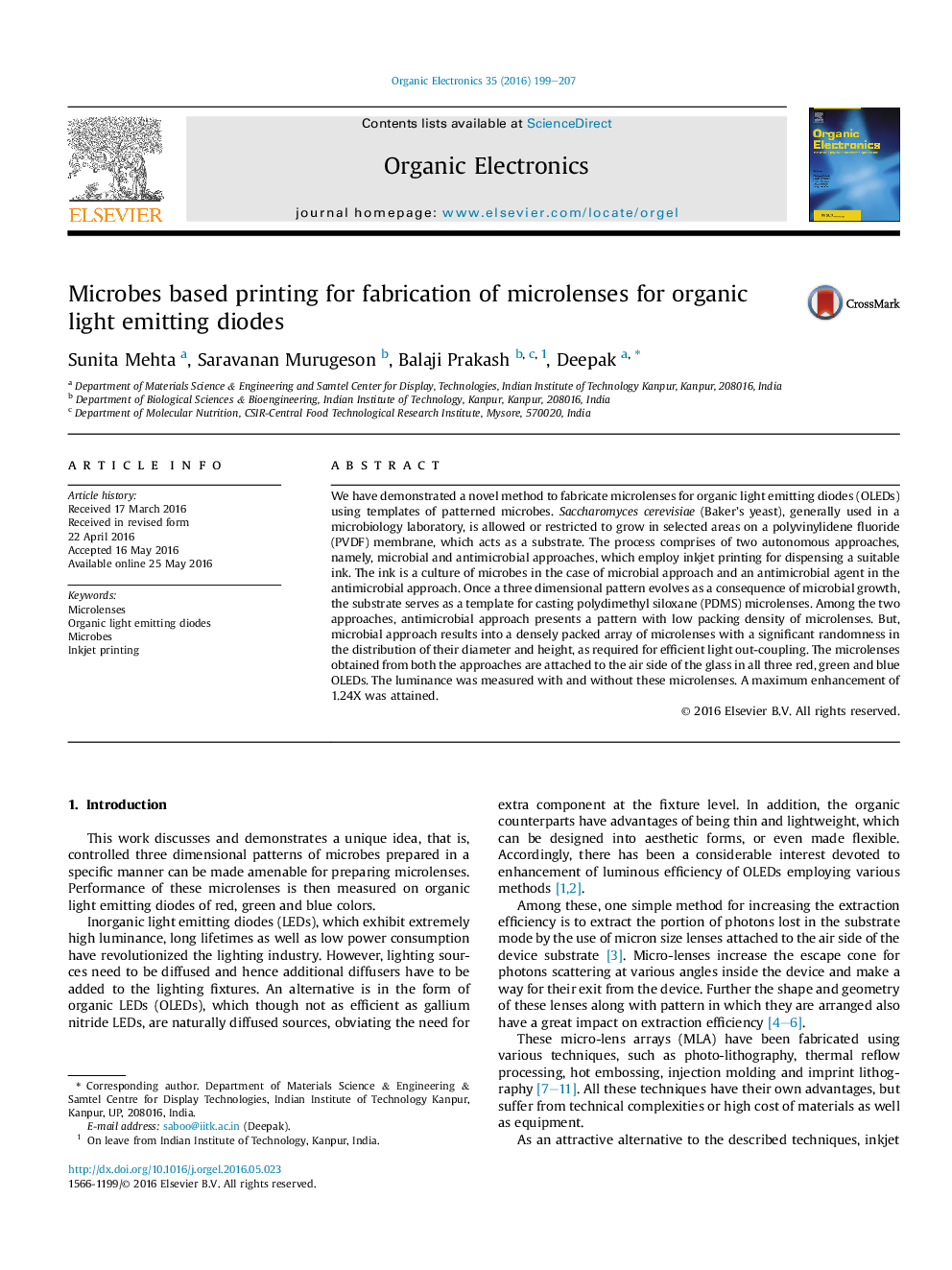| کد مقاله | کد نشریه | سال انتشار | مقاله انگلیسی | نسخه تمام متن |
|---|---|---|---|---|
| 1266821 | 1496822 | 2016 | 9 صفحه PDF | دانلود رایگان |
• Fabrication of microbial templates for microlenses has been described.
• The process constitutes two approaches-microbial and antimicrobial approach.
• The use of inkjet printing technique has been discussed.
• A densely packed array of microlenses achieved using microbial approach.
• A maximum luminance enhancement of 1.24 X has been attained using red organic light emitting diode.
We have demonstrated a novel method to fabricate microlenses for organic light emitting diodes (OLEDs) using templates of patterned microbes. Saccharomyces cerevisiae (Baker’s yeast), generally used in a microbiology laboratory, is allowed or restricted to grow in selected areas on a polyvinylidene fluoride (PVDF) membrane, which acts as a substrate. The process comprises of two autonomous approaches, namely, microbial and antimicrobial approaches, which employ inkjet printing for dispensing a suitable ink. The ink is a culture of microbes in the case of microbial approach and an antimicrobial agent in the antimicrobial approach. Once a three dimensional pattern evolves as a consequence of microbial growth, the substrate serves as a template for casting polydimethyl siloxane (PDMS) microlenses. Among the two approaches, antimicrobial approach presents a pattern with low packing density of microlenses. But, microbial approach results into a densely packed array of microlenses with a significant randomness in the distribution of their diameter and height, as required for efficient light out-coupling. The microlenses obtained from both the approaches are attached to the air side of the glass in all three red, green and blue OLEDs. The luminance was measured with and without these microlenses. A maximum enhancement of 1.24X was attained.
Figure optionsDownload as PowerPoint slide
Journal: Organic Electronics - Volume 35, August 2016, Pages 199–207
